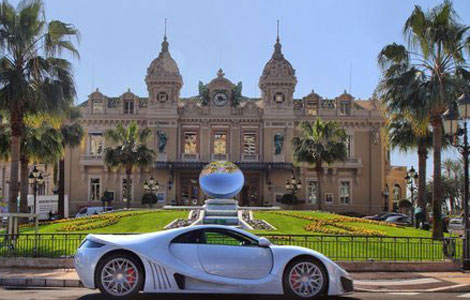Foreign and Military Affairs
Full Text: China's Foreign Aid
Updated: 2011-04-21 17:52
(Xinhua)
Industry
Industrial aid was an important part of China's foreign aid in its early stage. From the 1950s to the 1970s, China helped many newly-independent Asian and African countries undertake a number of industrial projects. These projects, many of them first ever of their kind in these countries, laid the foundation for their industrial development. Industrial aid increased rapidly in the 1970s, constituting an important part of China's complete projects aid to other countries at that time. Since the mid-1980s, China gradually reduced its aid in this regard, as many developing countries stepped up privatization in the industrial sector. The industrial projects established with China's help have played an active role in promoting production and economic development, creating jobs, increasing tax revenues and invigorating markets in the recipient countries. By the end of 2009, China had helped developing countries construct 688 industrial production projects, covering light, textile, machinery, chemical, metallurgical, electronic, construction materials, and energy industries. Of these, the Hama Textile Mill in Syria, the Cement Factory in Rwanda, the Rioja Cement Factory in Peru, the Agriculture Machinery Factory in Myanmar and the Loutete Cement Factory in the Republic of Congo are always profitable. They employ a large number of local people and yield sound economic and social benefits.
Economic Infrastructure
Economic infrastructure construction is always an important part of China's foreign aid. Despite its limited foreign aid funds, China has made full use of the mature technologies and relative low cost of manpower to help other developing countries construct a host of infrastructure projects in transportation, communication, power supply, etc. By the end of 2009, China had helped other developing countries build 442 economic infrastructure projects, such as the Sana'a-Hodeida Highway in Yemen, the Karakoram Highway and Gwadar Port in Pakistan, the Tanzania-Zambia Railway, the Belet Uen-Burao Highway in Somalia, the Dry Dock in Malta, the Lagdo Hydropower Station in Cameroon, Nouakchott's Friendship Port in Mauritania, railway improvement in Botswana, six bridges in Bangladesh, one section of the Kunming-Bangkok Highway in Laos, the Greater Mekong Sub-region Information Highway in Myanmar, the Shar-Shar Tunnel in Tajikistan, the No.7 Highway in Cambodia, and the Gotera Interchange in Addis Ababa of Ethiopia. These projects have helped improve the environment of life and production for the local people, and create better conditions for the development of the local economy and society.
Public Facilities
Public facilities built with aid from China in other developing countries mainly include municipal utilities, civilian buildings, wells for water supply, conference centers, sports venues, culture venues, and facilities for scientific, educational and medical care purposes. By the end of 2009, China had helped other developing countries build 687 public facilities of various kinds. The major ones include the Bandaranaike Memorial International Conference Hall in Sri Lanka, the Friendship Hall in Sudan, the National Theater of Ghana, the Cairo International Convention and Exhibition Center in Egypt, the Radio and Television Broadcast Center in Comoros, the International Convention Center in Myanmar, the Moi International Sports Center in Kenya, the Multi-Functional Sports Stadium in Fiji and the Tanzania National Stadium. They have all become centers for social, political and cultural activities as well as landmark buildings. Some public welfare facilities, including the Capital Water Supply Project in Nouakchott, Mauritania, the Well-Drilling Project in Cambodia, the Water Supply Project in Chalinze, Tanzania, and the Water Supply Project in Zinder, Niger, low-cost housing projects in Angola and Surinam, have played an active role in improving the living conditions of local poor people.
E-paper

Han me downs
Traditional 3,000-year-old clothes are making a comeback.
Preview of the coming issue
Reaching out
Fast growth fuels rise in super rich
Specials

25 years after Chernobyl
Belarus, Ukraine and Russia will mark the 25th anniversary of the nuclear reactor explosion in Chernobyl.

Luxury car show
The world's most prestigious luxury, sports cars and supercars are displayed in Monaco.

Peking Opera revival
Traditional opera is enjoying a revival in Beijing thanks to some modern touches.
